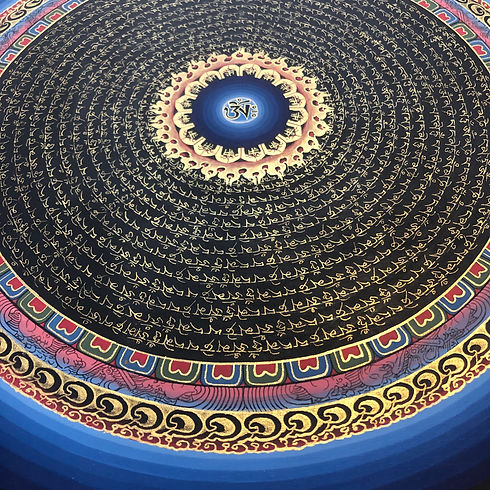Mandala art, with its intricate patterns and vibrant colours, has captivated the hearts and minds of art enthusiasts for centuries. Derived from the Sanskrit word meaning "circle," mandalas are geometric designs that represent the universe and the interconnectedness of all things. In Tibetan and Nepalese art, mandalas hold a significant place, serving as powerful tools for meditation and spiritual awakening.
At the heart of mandala art lies its symbolic significance. Each element of a mandala holds a deeper meaning, contributing to its overall message. The central point, known as the bindu, represents unity and the divine center. Radiating from this central point are various geometric shapes, such as squares, triangles, circles, and lotus petals, forming intricate patterns that symbolize balance, harmony, and spiritual growth.
Mandala art is often used as a visual aid in meditation, helping practitioners achieve a state of deep concentration and focus. By gazing at the mesmerizing patterns and following the paths within the mandala, individuals can enter a state of mindfulness, transcending the limitations of the physical world and accessing higher states of consciousness.
In Tibetan Buddhism, mandalas are meticulously created by skilled artists using traditional techniques and sacred materials. The process of painting a mandala is considered a spiritual practice in itself, with the artist imbuing their work with intention and devotion. Every brushstroke and colour choice is carefully considered to ensure the mandala reflects the essence of the deities and teachings it represents.
Mandala art is not limited to paintings alone. It can also be found in sand mandalas, where skilled practitioners create intricate designs using coloured sand. These temporary mandalas are meticulously constructed and then ritually dismantled, symbolizing the impermanence of all things.
In the world of art, mandala art stands out as a powerful expression of spirituality and self-discovery. Its mesmerizing beauty and profound symbolism continue to inspire and uplift individuals on their journey of personal growth and transformation.

As Featured In


Thangka is an ancient Tibetan art form comprising paintings or embroidery on woven materials such as cotton or silk. The preparation of the canvas is a crucial part of the process, with the quality of the material significantly influencing the final artwork. A mixture of animal skin glue, distemper, and water is applied to the canvas, which is then dried in the sun and polished with glass. This process can take up to two weeks and is repeated several times.
Premium quality Tibetan Thangka paintings use paint derived from precious and semi-precious natural minerals, crystals, and plant materials, including pearl, coral, lapis lazuli, cinnabar, sulfur, azurite, and malachite. These natural substances are renowned for their healing properties and intrinsic power. The artist grinds the materials into a fine powder, mixing it with hide glue and water to ensure long-lasting vivid and vibrant colors. The final touch involves the application of 24 Carat Gold and Sterling Silver.
To bring the artwork to life and infuse it with positive energy, premium quality paintings crafted by experienced artists are taken to a Buddhist Lama for a sacred blessing ceremony. Through this process, the Thangka becomes imbued with wisdom, serving as a genuine representation of an enlightened mind in a tangible form. This ritual not only enhances the spiritual essence of the artwork but also ensures that it resonates with the transformative energies of Buddhist teachings, enriching the experience of those who engage with it.

.webp)

